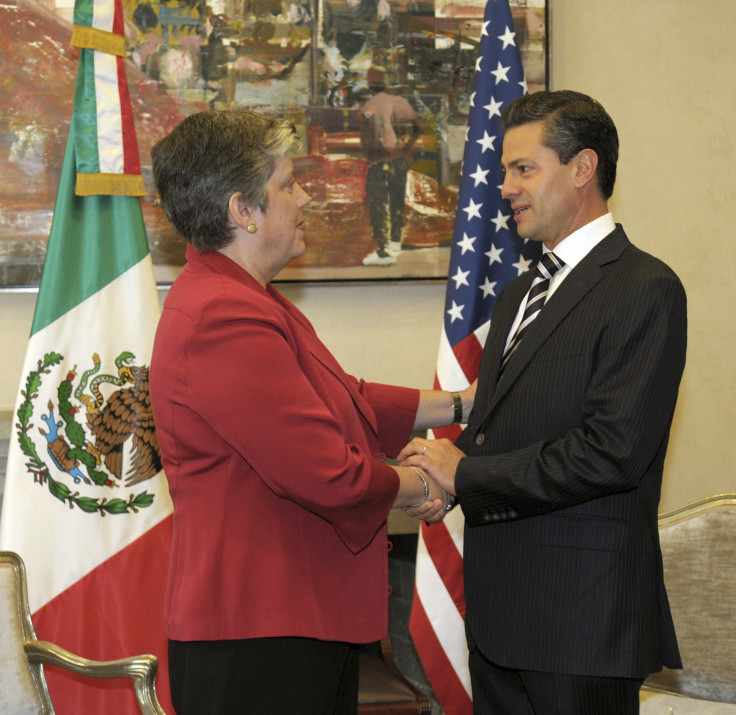
Overview
Mexico's economy has been able to expand slowly over time, making it the second largest economic system in Latin America. Due to its open government, it has connected industrially with larger economies over the past two decades in hopes of gaining a more successful economy itself. The country's openness to business with other countries has helped greatly, but economic, financial and social struggles still exist. As Mexico agreed to free trade with the U.S., unemployment rose and lead to one of today's focal issues in Washington, immigration. The U.S., being the world's economic power, and Mexico have become somewhat codependent economically, but as a result other issues evolved.
Fast Facts
Region: Middle America
Divided into three major cities, which is worth 115, 017, 631 of population
Mexico City (capital) - 8, 477, 580
Ecatepec - 1, 671, 236
Heróica Puebla de Zaragoza - 1, 467, 419
Ethnicities
Mestizos - 60%
Indigenous - 30%
European descent - 9%
Other - 5%
Religions
Roman Catholic - 89%
Protestant - 6%
Other - 5%
Position of Wealth in World: The 14th largest economy
Currency: Mexican peso; 1 Mex$ is equivalent to 100 centavos
Exchange rate (LCU per USD) : 13.2 %
GDP: $ 1, 177, 271, 329, 643 per USD
GDP Growth: 3.9%
GNI per capita: $9, 740 per USD
Inflation rate: 4.1%
Poverty percentage: 51.3%
Life Expectancy at Birth: 77 years
Languages Spoken
Spanish
Various Mayan dialects
Holidays
Independence Day - since 1810 (Sept. 16), Constitution Day (Feb. 5) and Cinco de Mayo (May5)
Source: Country Watch
History
From the beginning of its history, Mexico has been a diverse region with various cultural backgrounds, such as Olmec, Mayan, Tolcec and Aztec. Following the end of the Aztec, came the overthrow by Spaniards on 1521 that lasted until the country's independence on 1821. Still with an earned Independence, the government had little to no power and was looked down by the Institutional Revolutionary Party (PRI), which was seized 70 years later. After the first elections were held, Vincent Fox became Mexico's first official president for the next six years, until Felipe Calderon.
Over the years Mexico's government has become more liberalistic and has helped its path to wealth. Mexico agreed to join NAFTA (North American Trade Agreement) -- composed of the U.S. and Canada -- which gave the government economic liberalization.
Mexico's region is rich with significant natural goods, but mainly in oil and corn. Because of its bountifulness in these two raw goods its economy is extremely dependent on exports to the United States. Since 1994, the country has successfully overturned its agricultural sector and economy making them more productive. Today, its agricultural exporting to the U.S. alone makes up 80 percent of its growing economy.
Just like the rest of the world, Mexico had its down turn during the world economic and financial crisis, which led to a decline in its agricultural and manufacturing sectors. In 2008 its GDP was at 1, 093,096,181,804.40 trillion in USD, but a year later it declined to 884,351, 745, 752.59, according to the World Bank. Hence, the rapid downturn the government needed to make quick improvements and it did because in 2010, as the world crisis had begun to disperse, its GDP rose to 1,035,071,158,245.73. By 2012, its economic growth began to slow down due to less manufacturing demand from the U.S., who is its outmost economic aid.
Still, it has kept its role as the second largest economy in Latin America by increasing its GDP to 1,177,271,329,643.86, which is higher than what it was on 2008.
The U.S. And NAFTA's Double Standard for Mexico
The United States serves as an agricultural aid to Mexico because of the American agricultural industries that have evolved in Mexico -- after NAFTA -- which have created jobs and increased production of raw goods. Indeed there have been more jobs in Mexico but only for the highly skilled, which is made up of more foreign workers than natives. After NAFTA was signed, an influx of highly subsidized corn flooded the Mexican market left many farmers without land and work. As a result of NAFTA, the Mexican government was sure to give the newly unemployed jobs in factories, but that did not go as planned. Free trade with the U.S. was said to help increase exports and by that GDP, which it did. Mexico has had its ups and downs but overall it has kept growing with an evolving agriculture and manufacturing that is highly demanded from the U.S.
It wasn't until early 1994 that Mexico was able to expand economically and industrially with the help of NAFTA. The agreement was signed on Jan. 1 of 1994 by the United States, Canada and Mexico. This agreement included the passage to no barriers between these regions and the freedom to establish entities within them. The cost of imports and exports would be cheaper, yet more profitable by the decline in tariffs. The issue with the agreement is it created it a double standard for Mexicans.
Many agree that "one of the largely overlooked aspects of the North American Free Trade Agreement is the fact that the failed trade pact has been the catalyst for the massive increase in illegal immigration over the past two decades or so," reported Dustin Ensinger from Economy In Crisis.
The elimination of barriers did not eliminate the barrier for Mexicans to cross the border; on the contrary, it only gave freedom to trade and investments. Still with its double standard, the constructing and taking over of businesses by Americans has led Mexican workers to enter the U.S. illegally to sustain themselves and their families.
Indeed Mexico has been opened to free trade to achieve a growing economy, but the lack of government tactics has led the U.S. to take more control and profit from various economic sectors, agricultural and manufacturing, mainly. At the commencement of NAFTA many, if not all, Mexican farmers lost their lands and many began to live in poverty.
NAFTA And Immigration
As a result of higher American control in Mexico, natives lost their jobs and their lands, which augmented the unemployment rate and poverty. Due to these economic and social issues Mexicans' resolution was to cross the border regardless of what the agreement stated. Over the past two decades immigration to the U.S. has increased tremendously and even more following the world economic and financial crisis.
Mexicans have left their hometowns and crossed the border to achieve the "American Dream." The dream of finding a job and even going to school, for some, has been their guiding light through their struggle. For many, their dream is to gather the money they need to live a better lifestyle and then return to Mexico. Others cross the borders to never return and have their families cross, as well. However, nearly all undocumented immigrants fear getting caught. The fear lies is in the struggle of actually crossing the border without being arrested or killed and for those waiting for their families on the other side to arrive safely.As of 2013, it has been declared that there are 11 million immigrants from all around the globe in America who are waiting for reform to pass. Mexico has economically expanded thanks to the U.S.'s aid but we must take in consideration that it has also helped the U.S. become globally industrialized and an economic power. So, in the end Mexico's co-dependence on the U.S. is reflected in both economies.
FASCISM: NAFTA a Cause of "illegal Immigration", Destroyer Of Mex-Agriculture & US Manufacturing
NAFTA + U.S. Farm Subsidies Devastates Mexican Agriculture
The Effects of NAFTA on the Mexican Economy
NAFTA - Benefits of U.S. and Mexico's Trade Partnership
© 2025 Latin Times. All rights reserved. Do not reproduce without permission.




